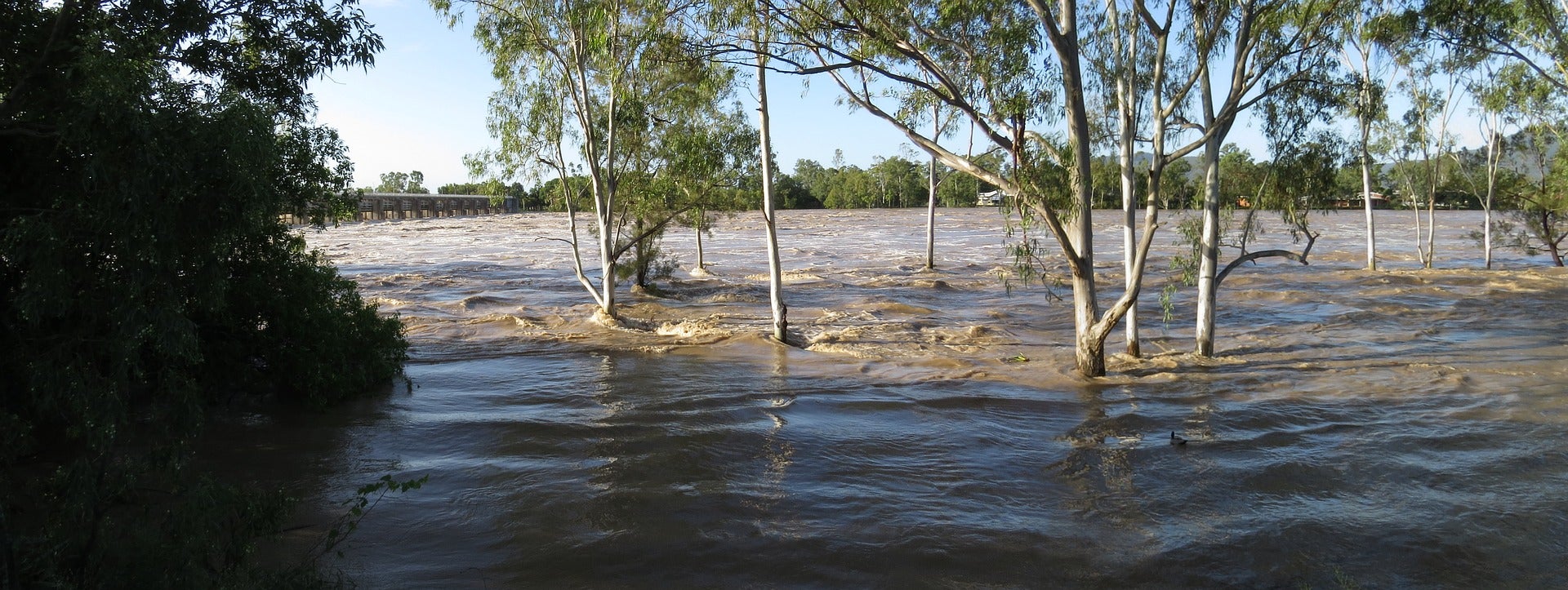Imagine that you and your family have lived in a lush community and filled with life. In the days of your grandparents, only a few families lived there, but today it is home to about 5,000 people. Imagine also that your house lies in fertile land, between two rivers that frequently overflow from December to March. Imagine then that your house is flooded for days, and the situation is so critical that the street where you live is only passable by boats. Imagine now that almost all your neighbors and friends – more than 80% of the population, to be exact – have been evacuated, are simply not able to work, and have been driven out from their homes, which, for the most part, will be destroyed or severely damaged.
This is the story of the residents of Lamadrid, an Argentine town south of the province of Tucumán, surrounded by the El Chileno and the Marapa rivers. Lamadrid is characterized by a low topographic slope and is highly susceptibility to flooding. Houses devastated by water, sad faces and boats floating on the streets are some of the images printed by the local newspaper ‘La Gaceta’, after intense rains that led to large floods in April 2017.
According to a flood risk analysis carried out by ITEC (2019), over the past 50 years there have been at least six severe flooding events in the area, which most likely were exacerbated by intense anthropogenic intervention. More than 950 km² (95,000 ha) of native forest have been cut down in a span of 33 years, equivalent to a clearing rate of almost 8 hectares per day. The immediate effect of deforestation was the modification of local hydrogeomorphological dynamics.
The intensity and frequency of disasters is increasing. As effective risk management is a priority for the Inter-American Development Bank (IDB), we are always interested in understanding how to facilitate the recovery process after a flood hits and what alternatives we have to prevent disasters in the future. How can we prevent a seventh flood in Lamadrid?
IDB has a vast experience to prevent and mitigate the impact of this type of devastating shocks in Latin America and the Caribbean. An example of the integrated disaster risk management approach the Bank is well known for is the technical cooperation (TC) in support of the program ‘Disaster-Risk Resilient Argentina’. This grant responds to the need of improving the country’s understanding of risk and building resilience capacity, as established in the 2015-2030 Sendai Framework for Action, which we have already discussed in previous posts.
Several activities will be financed with the TC, among them environmental awareness interventions, early warning system development, preparation and updating of local development plans incorporating flood risk dimensions, as well as climate change risk studies.
An important component of the TC focuses on the design of flood risk reduction infrastructure, such as floodgates, retention lagoons, hydraulic and drainage systems, as well as closure structures for the diversion of the San Francisco river, which aims at restoring the fluvial dynamics of the area. These designs are based on predictive models with simulation of rainfall, hydrodynamic models with simulation of flood events and global climatological models: a perfect combination of science, technology, engineering and statistics. These simulations allowed to identify the most vulnerable areas of Lamadrid and estimate the value of infrastructure and other assets exposed to flooding.
When these works are completed, the impact on the welfare of the population will be significant. A quantitative risk assessment concluded that expected losses from floods will be reduced from US $ 3.9 million to US $ 68,000 per year. In other words, flood control works would reduce the average cost of floods by more than 99%. In the case of a catastrophic flood (that is, one that occurs once every 100 years), the economic losses would decrease by 98%, from US $ 14.3 million to US $ 300,000.
You may think that surely this dramatic risk reduction strategy would be extremely costly for the community, but in fact it is economically feasible, with a return of twice the initial costs of the investment. In other words, for every dollar invested in disaster prevention, the Argentinian government saves Lamadrid residents two. There is a clear advantage of proactively investing in disaster risk management.
We at IDB will continue offering cost-effective solutions for risk reduction while promoting capacity-building resilience. Investments for the prevention of risk are indispensable: not only do they generate economic stability and help prevent significant economic losses, but also promote a positive recovery process and save lives.
Imagine that the people of Lamadrid, once and for all, can live at peace and unafraid of leaving their homes with no idea where to go for the seventh time.
Image by Vicki Nunn from Pixabay
This blogpost is part of the IDB Group’s COP25 Campaign. COP25, under the Presidency of the Government of Chile, will take place from 2 – 13 December 2019 in Madrid, with logistical support from the Spanish government.
#BIDCOP25 #COP25


Leave a Reply